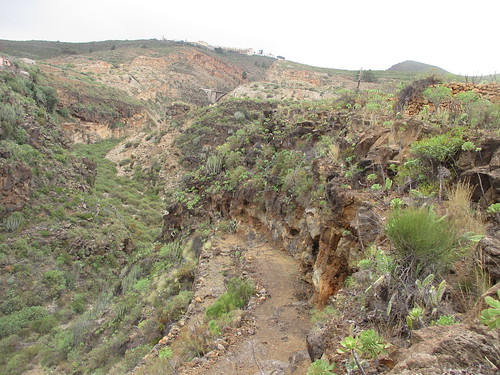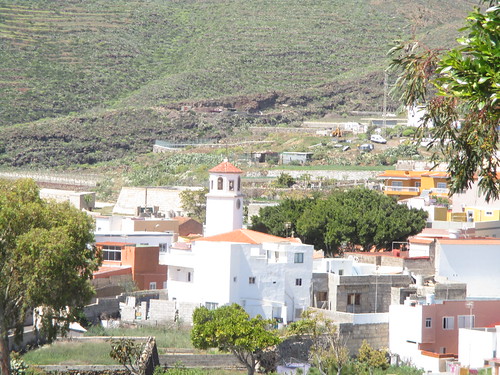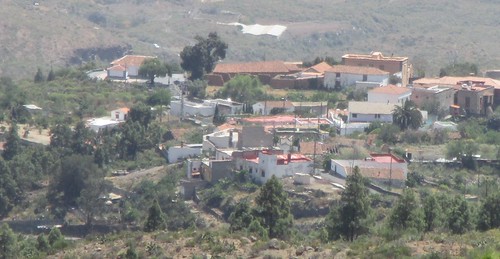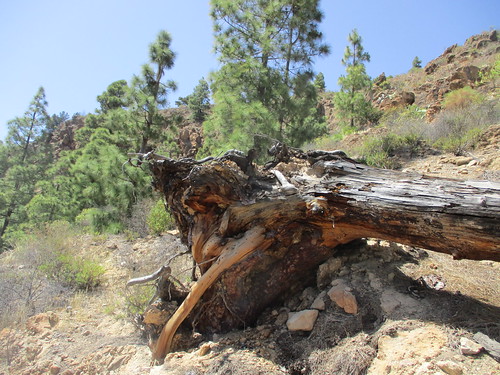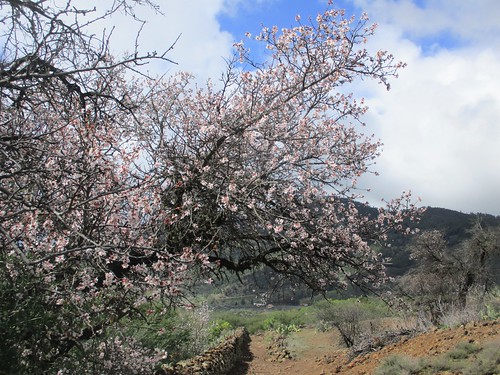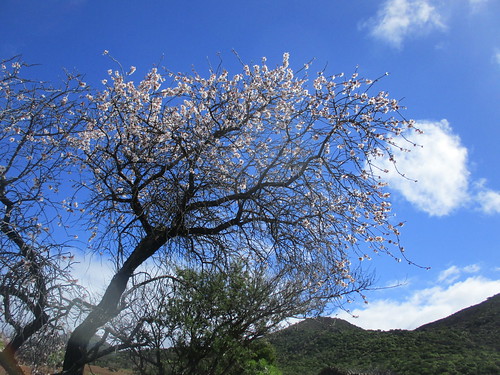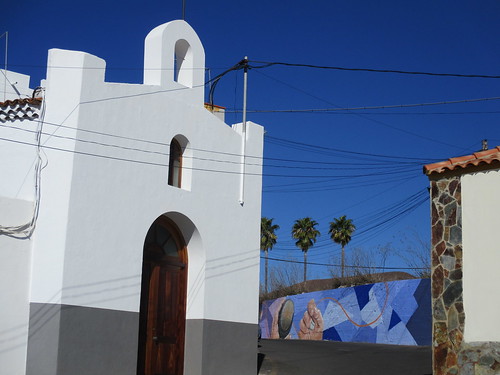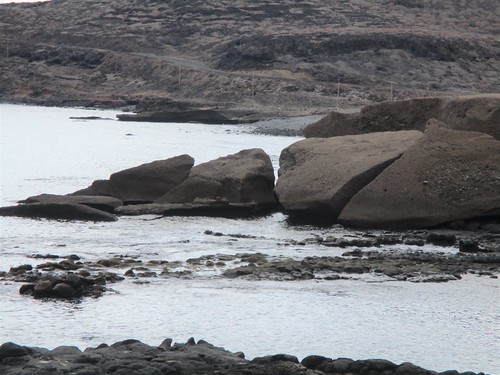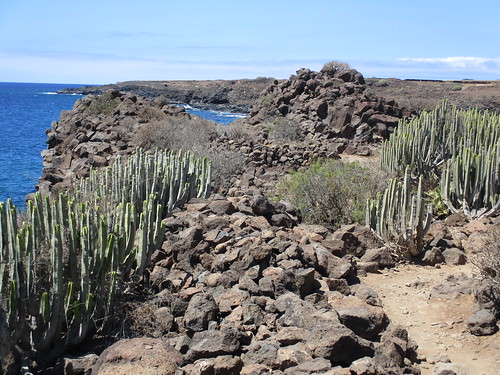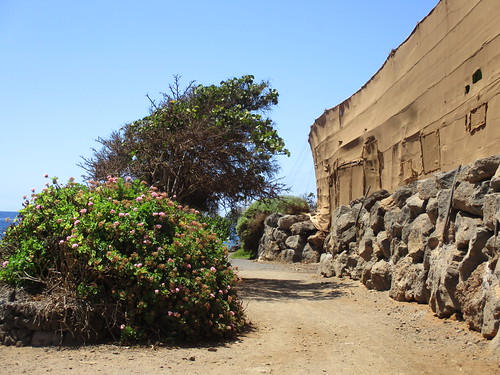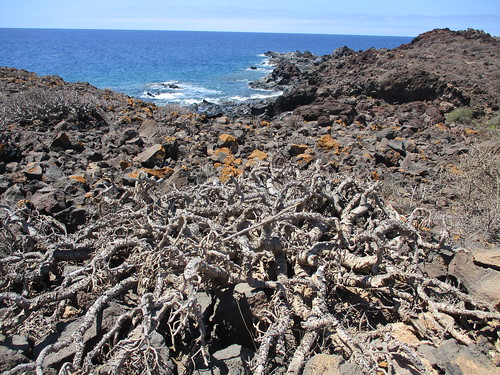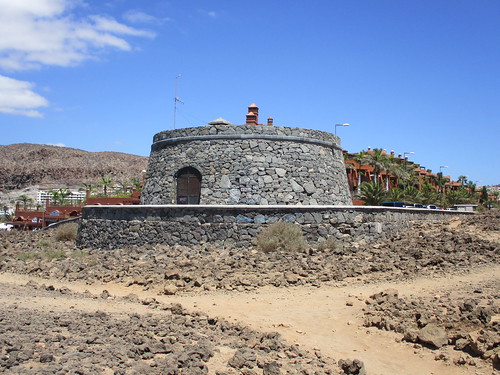
Cathedrals of rock rose steeply from secluded beaches, and the few people chosing to dip their toes certainly earned their reward by threading their way through old plantations, and past mirador viewing points, defended in the past with canons. My starting point for the Rambla de Castro was only a small trial and error challenge through entry points close to Puerto de la Cruz but worth every step. Notices warning of rock falls were nearly all breached at various points just beyond Playa Jardin, Punta Brava, Loro Parque, and two old tall pastel coloured hotels. The best entry route was between the two modern La Romantica housing complexes.


Playa Los Roques spread out below as the foaming tide tickled the secluded rock stacks, the insistent roll of the waves was almost like nature itself breathing. My feet didn´t quite share that notion as I followed the twisting track down to a large protrusion with a tight walkway wrapped around it. On the far side, seagulls dived and swirled as I ducked my head to pass under an archway carved out by the tide. Retracing my steps up to the higher road, a modest commercial estate soon gave way to the resumption of the high coastal ledge.

The long view ahead soon revealed rising green terraces inland, and more secrets below. Despite these competing charms, it was the bizarre ruin of the Gordejuela water pumping station that caught my eye. Dating back to 1909, it had seen better days, and had been partly stripped, a compact modern water station mocked the remains from a high perch. A small mirador viewing point was a good point for reflection, a smart, modern walkway, complete with safety rails led up and beyond into Los Realejos, and up the other side of the ravine and beyond up the coast.



The carpenters devotion to the wandering staircases served me well as I ventured further up the coast where more miradors sprouted at key points. These were great to view the small coves below. Mirador El Fortin was one of the smaller look outs but packed a punch in its day from some small but potent canons. It was a baking hot afternoon and several groups of young people were answering the call of the waves. I was moving along the cliff tops and then back inland to a point where several paths converged just by the leafy shade of a plantation.



The grand old house , La Casona, stood proud but in need of some attention, that was granted a few days later in the form of a 8 million euro, 2 year restoration programme announced by the Tenerife government and the local municipality, Los Realejos. A multitude of paths veered off from this point, I was looking to move on into San Juan de La Rambla but emerged quite a way short on the main road linking La Orotava and Puerto de la Cruz with Icod de Los Vinos. My Titsa bus ticket allowed me a few other stop off on a unhurried return to the south, there were plenty of variations left for another trip soon.
